*Note: This post refers primarily to the 2012 Amplification resources and the Original Can Do Descriptors, produced by the WIDA Consortium
Let’s say you’re a classroom teacher or a content-area teacher. Every Fall, the English language specialist shares with you a bunch of information about your English learners. You have a general conviction that you need to use this information to better support those students. You’ve heard about the WIDA Can Do Descriptors. But you’ve never really gotten a streamlined explanation of what they are and how to use them. You know you’re missing something big.
Wait…You ARE this content area teacher?! You’ve struggled with this every year?! Well then, may this blog post bring you some clarity on how WIDA Can Do Descriptors are meant to be a helpful tool as you plan awesome, accessible instruction!
Now, I’m going to assume a few things as you read this:
- You teach in one of the 40 U.S. states or territories that participates in the WIDA consortium.
- You’re in the process of learning more about WIDA resources and how to use them.
- There’s a lot on your plate, so you need the most relevant information, packaged to be streamlined and manageable.
- You have access to the 2012 WIDA Can Do Descriptors, available on this page. (Note: WIDA is continually updating and revising their amazing resources, and they provide free access to all those that remain relevant and useful for teachers–Like these!)
In the interest of your time, I’m going to simplify this process into four steps. I’m not going into the nitty-gritty details of language learning and best practices here. This is just a brief overview to help you move to the next step in application of the WIDA Can Do descriptors. First, make sure you have your EL’s WIDA ACCESS test score reports on-hand.
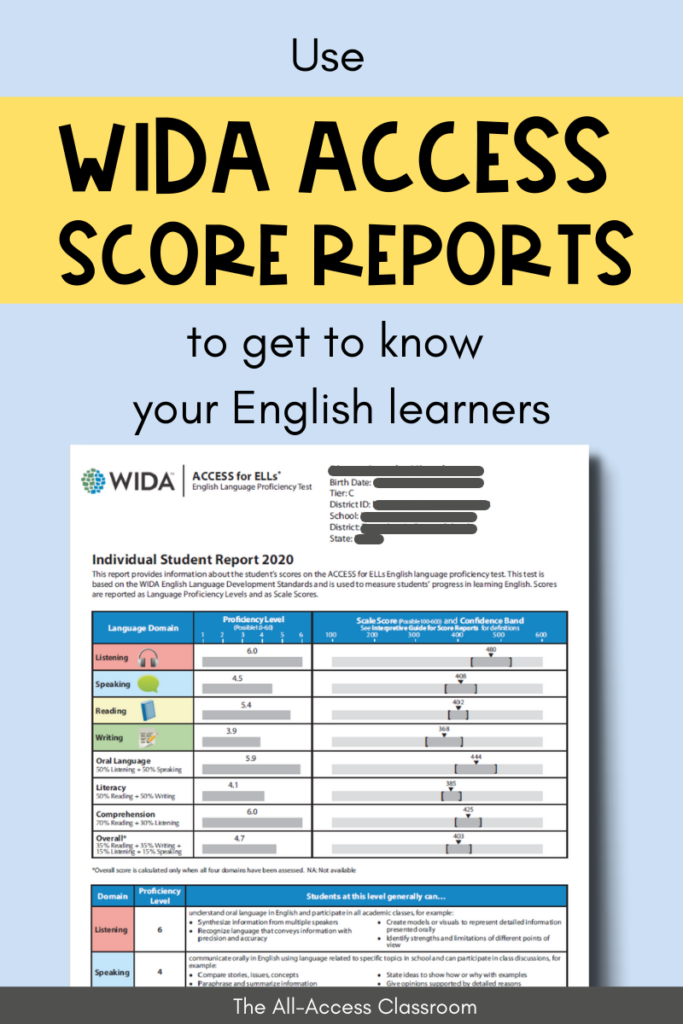
1. Get your WIDA ACCESS Score reports together
Every year, WIDA consortium states require that school districts administer the WIDA ACCESS test to all students listed as English learners. These students are given a unique test for each of the four language domains: Listening, Reading, Speaking, and Writing. After being scored off-site by staff at WIDA, score reports are sent back to districts for distribution to teachers and students’ caregivers.
These WIDA ACCESS tests are important because they provide helpful insights to the amount of growth students have in the four language domains. The data may help EL specialists in grouping students for instruction. Also, the scores on the reports can be essential to content-area teachers wishing to provide effective, accessible instruction.
Once you have the previous year’s WIDA ACCESS score reports in front of you (one for each of the ELs you teach), take a look at the proficiency levels (1.0-6.0) for each of the four domains.
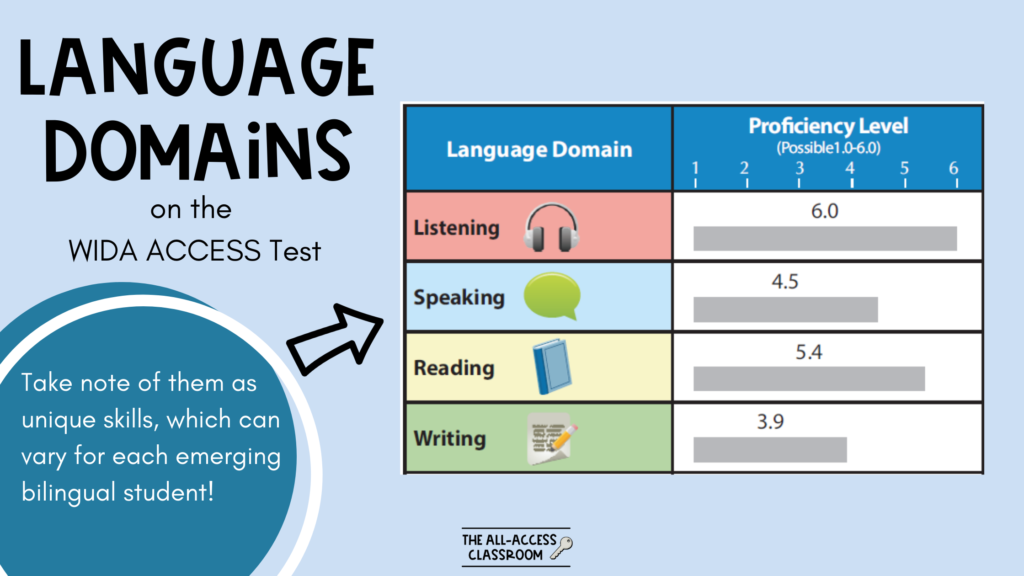
2. Organize the WIDA levels for easy reference
Having your students’ WIDA levels at-a-glance will be super helpful throughout the school year. You’ll need to reference them frequently as you plan instruction. WIDA has some helpful charts for this purpose. Try to avoid the temptation to focus only on the “overall” proficiency score from the report. Why? Each language domain (listening, reading, speaking, writing) is unique and distinct. You will want to be mindful of a student with high listening proficiency, but emerging English reading abilities. Or a student with strong receptive language (listening and reading), but emerging productive language (speaking and writing).
The domains each deserve their own assessment and consideration. Seeing all your English learners’ data at once is a powerful opportunity to identify the areas needing the most support. You may even notice some patterns or similarities across student profiles. Naturally, you can keep in mind for grouping or differentiation purposes.
3. Keep WIDA standards and proficiency levels in mind
There are some additional resources that are great to dig into when you have time. They will enrich your understanding of how students can use language at each level of proficiency. WIDA has done a remarkable job of producing a framework of language learning, which is meant to be laid against the backdrop of content instruction. The resources available for free in WIDA’s resource library are extensive. We could spend quite a while unpacking the foundational beliefs and research behind these resources! They’re pretty amazing!
To spotlight one priority of the WIDA standards writers, they emphasize the assets and strengths of ELs. They promote the understanding that being an emerging bilingual student is not a deficiency but an incredible benefit. Further, they recognize that the explicit teaching of academic language is vital to success for all students. And depending on where the English learner is on the proficiency scale, he or she may need a degree of support to access the language of the subject being taught.
The WIDA standards for English Language Development (ELD) are:
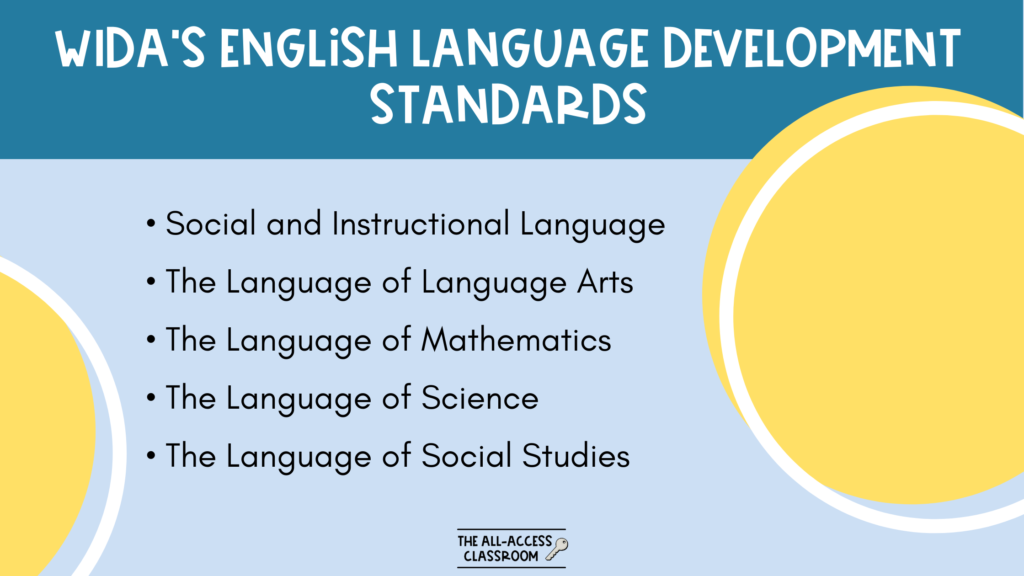
WIDA has a variety of tools and resources available on their website. These include detailed charts of language use at various grade levels, various subject areas, for various purposes. Here are links to some helpful resources:
WIDA Performance Indicators (Proficiency Levels with brief descriptions- see pages 5-6)
ELP Expanded Standards (called Model Performance Indicators) by Grade Level
For the sake of time, I’m going to move ahead to highlight your next step: the Can Do Descriptors, linked here. (Note: The “Original Can Do Descriptors” are what I reference for this post. These differ from the “Key Uses” edition of the Can Do Descriptors.)
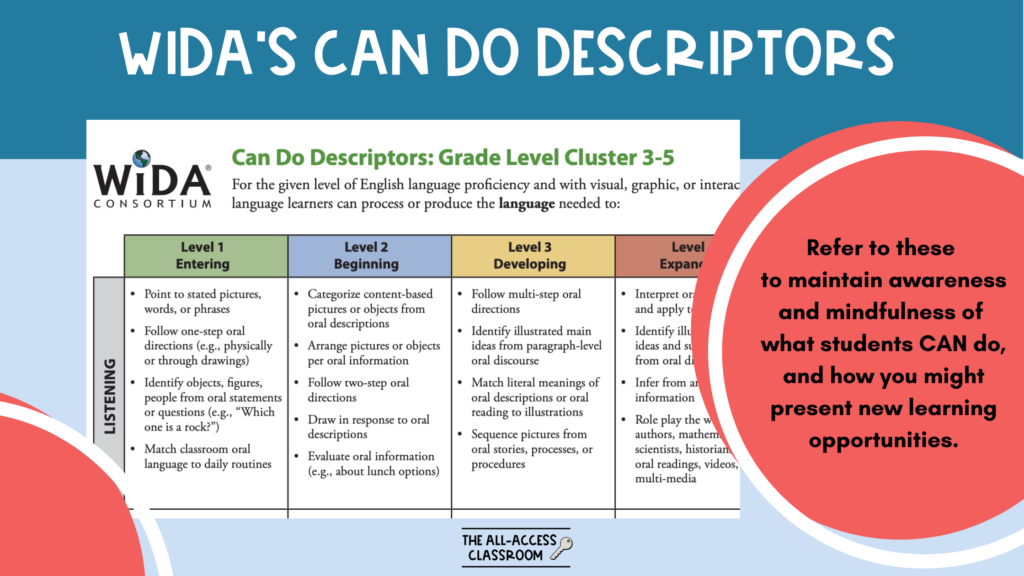
4. Let the Can Do Descriptors for WIDA guide your differentiation
You’re about to plan, say, a reading lesson about the differing points of view between two characters in a book. You have your at-a-glance chart of your students’ proficiency levels. You also have the Can Do Descriptors for WIDA at the ready. The descriptors, written for each grade-level “cluster,” give you a quick look at what you can expect students to be able to do. That is, they will give you some examples of specific ways your students should know how to use academic language already.
Having these examples will help you determine what learning opportunities to craft for your students. How to differentiate your assessment. How to group them for small group instruction. Which scaffolds may be necessary to encourage full participation and task completion.
To utilize the descriptors, simply locate those appropriate for your grade level. Identify the language domain of the key task you’d like students to complete as part of the lesson (Listening, Reading, Speaking, Writing). Finally move across the row to the language proficiency level of your student(s). You’ll find bulleted skills and activities that indicate some of what students at that level should be able to do. From there, your creative teacher brain will determine how best to apply these ideas to your instructional plans.
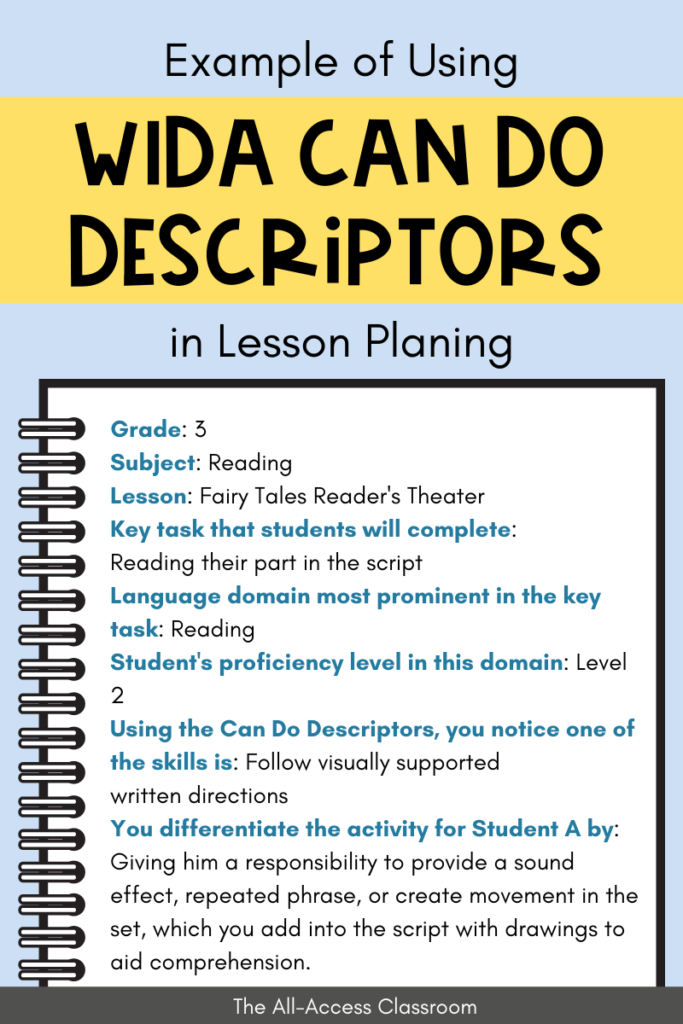
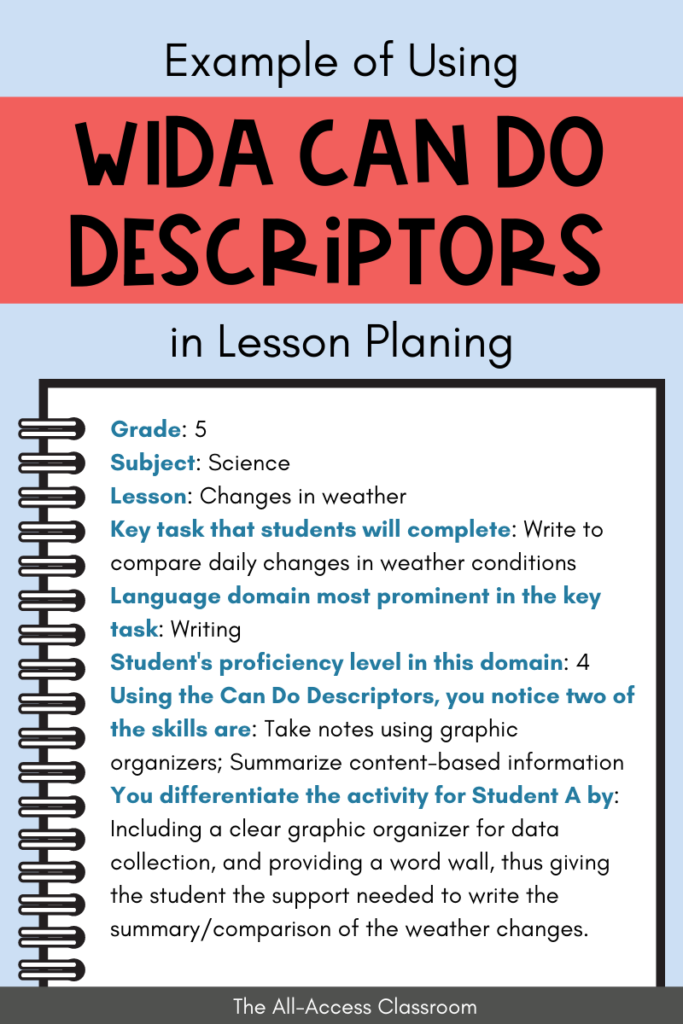
Helpful Links for WIDA Resources:
WIDA 2020 ELD Standards Implementation Bundle
Language Proficiency levels/Performance Definitions:
Speaking and Writing Listening and Reading
Can Do Descriptors:
You may also enjoy:
How to Write Content and Language Objectives for your Lesson Plans
How to Unlock Students’ Prior Knowledge
The WIDA Can Do Descriptors can give you some assurance that you are offering equitable, inclusive educational activities to all of your students. Regardless of where they are in their journey to bilingualism, you can open doors to success. The Can Do Descriptors are one of the keys to your “all-access classroom!” If your haven’t used the Can Do’s yet, try taking a look and let them help you with one lesson this week. Let me know how it goes!


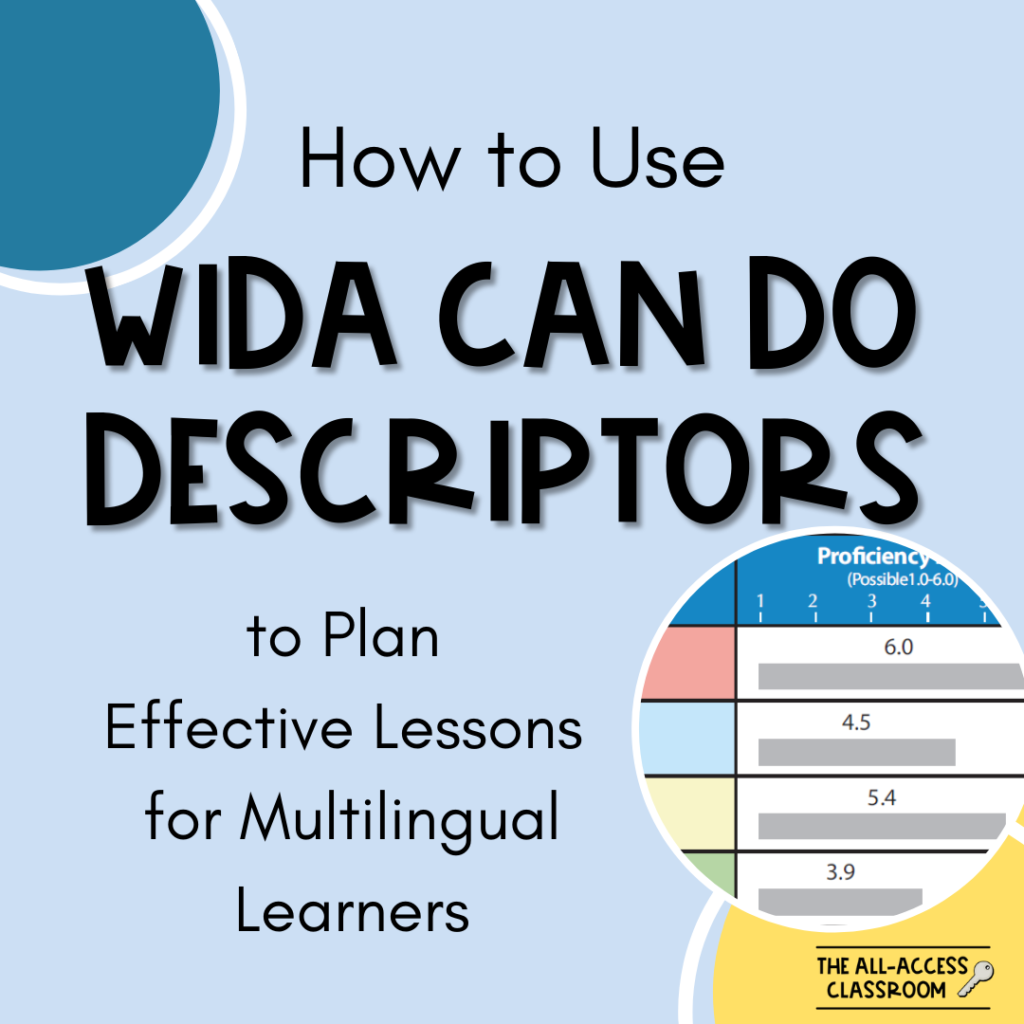
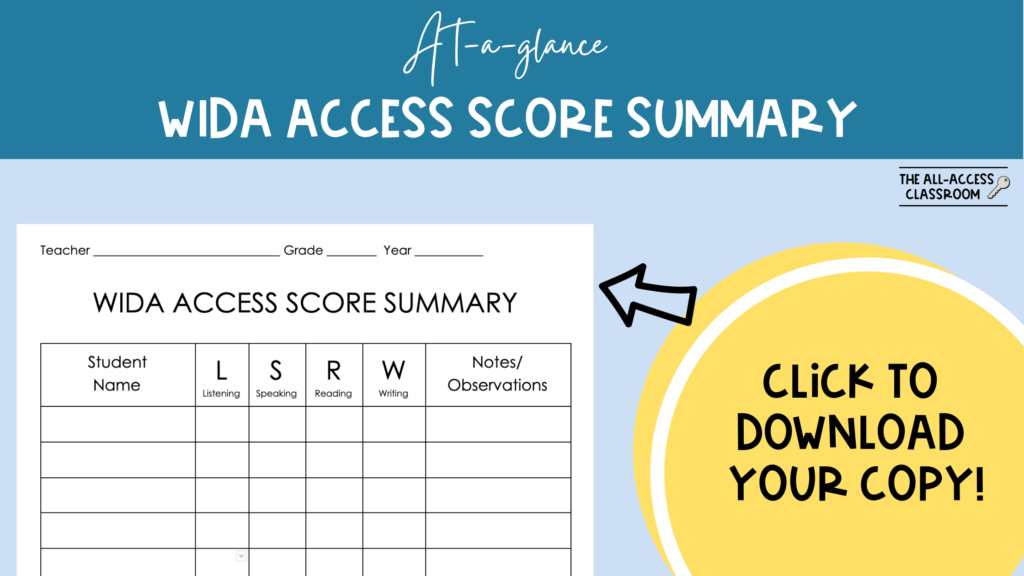
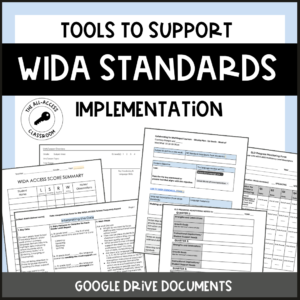

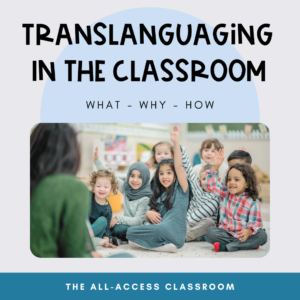


9 Responses
Thank you so much for your resources. These are so great for myself (ELL Coordinator) and also for my staff.
Thank you for your kind words, Auika! I appreciate you!
This was such an insightful blog post!!!
Hi Courtney,
I am a new EL teacher and I am really struggling with turning in my lesson plans on time and doing them. My Dean wants me to follow the I do, we do , you do model. Could you please help me?
Hi Val! I just sent you an email. Thanks for reaching out! 🙂
Hi Courtney!
I signed up to receive the Content and Language objectives guide. I received the email with but when I click on the link to open it, I get an error message. Could you please help me? Thanks!
Hi Giovana! Thanks for letting me know it’s not opening for you! Will you email me at courtney@theallaccessclassroom (just say “link please!”…I’ll know who you are), and I’ll send you the direct link to the template!